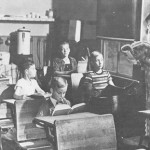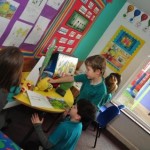We are in the Learning Age. Today, more than ever in history, people must be able to learn and adapt quickly. Technology, jobs, processes, and knowledge are constantly changing and evolving. In order to keep up, people need to have the ability to learn, problem solve, question, and create.
As instructional designers and facilitators, this is an exciting time, if you are willing to be more creative and think outside-of-the-box. Instead of training on boring repetitive tasks, you get to help people grow.
Returning to The Accelerated Learning Handbook by Dave Meier, here is how he summarized the difference between how we used train to how we need to train in the Learning Age:
Traditional Learning tends to be:
|
Accelerated Learning tends to be:
|
Accelerated Learning involves the right and left brain, and the knowledge is not absorbed, it is applied allowing the brain to create a natural use and meaning for the knowledge. AL uses collaboration and engages the learner on many levels, such as multi-sensory, and paraconscious. AL recommends learning by doing, positive environments, and the use of imagery, whether pictures or metaphors.
Learning has changed a lot over the decades. It is time that our training changes with it.



